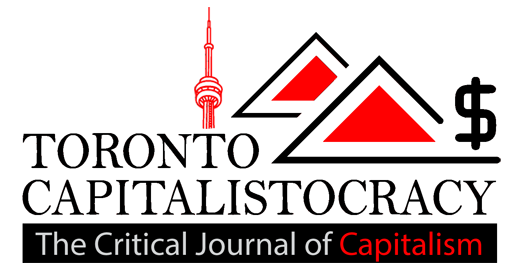Business
Why You Might Not be Able to Buy Whipped Cream this Christmas

If you were planning to serve whipped cream with your holiday desserts this year, you might want to acquaint yourself with the homemade kind.
Thanks to a North American shortage of nitrous oxide, a critical ingredient in aerosol whipped creams, some major manufacturers have announced that they won’t be able to keep up with holiday demand.
Among the companies that expect to see shortfalls are ConAgra, which makes best-selling whipped cream Reddi-wip, and Dean Foods, which sells whipped creams under a range of local brands.
But the impact of the shortage will likely be more widespread than that, experts say.
The story behind the whipped cream shortage —which involves laughing gas, a tragic explosion and a U.S. federal investigation — reveals one of the industrial food system’s core weaknesses: The increasing concentration of power among a few companies, in a few areas, and at a handful of plants.
“It’s very concerning how vulnerable we’re making our food system to weather, fuel shortages, accidents, strikes, foodborne illnesses,” said Philip Howard, a sociologist at Michigan State University who studies consolidation in the food system. “There are many variables that make it possible that the food on our grocery shelves this week won’t be there the week after.”
A key ingredient in whipped cream is a nitrous oxide, sometimes called “laughing gas” for its ability to relax people and ease pain when getting teeth pulled. But it also acts as a propellant to get whipped cream out of the can and a preservative to keep it from going rancid.
Just two companies, Air Liquide and Matehson Tri-Gas, produce nitrous oxide for all of the United States and Canada. Together, they operate five nitrous oxide plants, which supply the three packing facilities that can the majority of North America’s whipped creams.
At each of these highly consolidated nodes, even a small disruption could impact a large number of products further down the supply chain.
“This story is a metaphor for the vulnerability of the entire food system,” said Daniel Block, a professor at Chicago State University who has studied the geography of food distribution. “It serves as a sort of canary in a coal mine, in the case that was a real industrial disaster.”
On Aug. 28, the Air Liquide nitrous oxide facility in Florida — operated by its subsidiary Airgas — suffered a fatal explosion that left one man dead.
The incident, which is still under federal investigation, reduced the company’s nitrous oxide output in “the short-term,” spokeswoman Sarah Boxler said — though she did not give a specific timeline and said that the explosion handicapped the facility “indefinitely.”
Air Liquide has allocated its remaining supply to medical clients first and back-burnered its clients in food manufacturing. With a limited supply of nitrous oxide, ConAgra and Dean Foods said they had to slash their whipped cream production, leaving peppermint hot chocolates and gingerbread cakes naked in the midst of the holiday season.
“We are proactively managing the production of Reddi-wip, and are doing the best we can to make it available to as many consumers as possible,” said Lanie Friedman, a spokeswoman for ConAgra. “We should have our full supply up and running by February.”
Neither Kraft, which makes Cool Whip, nor Saputo, which sells whipped cream under the Land O’Lakes label, responded to questions about whether they too would see shortages.
But because most aerosol whipped cream brands are made at the same large packing facilities, it’s likely that a shortage that impacts one label impacts all of them.
“The nitrous oxide shortage has impacted the majority of food suppliers who distribute aerosol products,” said Reace Smith, a spokesperson for Dean Foods. “Our co-packer is working closely with suppliers and allocating the supply based on greatest need.”
Manufacturers say the shortages will strike consumers on a store-by-store basis, depending on demand and pre-existing inventory. Dairy cases from Boston to Omaha have already gone empty.
Right now, Smith added, restaurants, hospitals and schools — not grocery stores — are taking priority.
And yet, even after Reddi-wip is back in stores, the core problem will remain: the concentration of food production among a few companies, in a few areas, and at a handful of facilities.
For instance, dairy farms — which supply the cream in whipped cream — are growing larger and less numerous, as are the dairy cooperatives that distribute their product. The number of dairy manufacturing plants fell by 75 per cent between 1970 and 2005, according to the U.S. Department of Agriculture.
Howard said they see a close parallel in the Eggo waffle shortage of 2009, which deprived consumers of the frozen breakfast food for several months. Kellogg’s, which makes Eggo, eventually revealed the cause was a flood in one manufacturing facility, and the outbreak of listeria in another — problems that would have had a less dramatic impact, Howard argues, if Kellogg’s had a less concentrated production process.
A similar — albeit vastly more dangerous — scare broke out around spinach in 2006, when an E. coli outbreak infected 199 people in 26 states.
Investigators traced the bug back to a single manufacturing facility in San Juan Bautista, Calif., which processed the spinach sold by 40 different brands across the country.
As a result of the ensuing recall, consumers learned that even competing brands, like Earthbound, Dole and Ready-Pac, often came from the same places, and were processed in the same plants.
“If there is a problem at a single facility, there’s a big impact,” said Paul Wolfe, a policy specialist at the National Sustainable Agriculture Coalition, which advocates on behalf of midsize farmers. He calls the whipped-cream shortage a “symptom of the consolidation taking place” everywhere from pork slaughterhouses to California pear orchards.
Reversing the trend will not be easy, Wolfe acknowledged. NSAC has lobbied for more antitrust enforcement in the agricultural sector, particularly in chicken and livestock processing, where the market is dominated almost entirely by four large firms.
Howard said he would also like to see regulators reduce subsidies for large companies and do more to empower competition from small producers.
He points to craft beer as one industry where such initiatives have worked. Despite the mergers of large beer companies like Anheuser-Busch InBev and SABMiller, small and independent breweries have flourished, benefitting from federal and local tax incentives that target smaller operations.
The number of breweries in the country reached a record-high 5,005 this year, according to the Brewers Association.
In the meantime, consumers will still be able to get whipped cream this season, if they’re willing to compromise or look around. Brands that have already built up their inventory will be spared, for instance, such as Natural by Nature, an organic brand sold along the East Coast. There will also be no impact on non-aerosol whipped cream products, such as Cool Whip tubs.
The best solution, however, might be whipping your own — no nitrous oxide required.
Business
Beauty Week is back at Hudson’s Bay in Toronto and it’s time to get glam

Beauty enthusiasts rejoice! Beauty Week at Hudson’s Bay is back in Toronto for another year. It’s time to stock up on all of your fall essentials and, maybe discover some new ones.
From Friday, August 18 to Sunday, August 27, you can expect a truly elevated beauty experience in-store with incredible special offers, limited-time gifts, and exciting activations.
If you’re a diehard beauty lover, you’ll already know that Hudson’s Bay is the place to shop thanks to its extensive range of over 195 skin and makeup brands from both luxury labels and masstige brands — including Tata Harper, Estée Lauder, YSL, Nars Cosmetics, Bobbi Brown, and so much more.
Throughout The Bay’s Beauty Week, visitors can take in some at-counter activations and interactive expert-led tutorials, where there will be chances to get makeup touch-ups from top-tier brands, try a spritz of the most alluring fragrances, and sample tons of new products.
This year’s Beauty Week highlight is the ‘Best in Beauty’ tote, a meticulously-curated selection of 30 deluxe samples from an array of top-tier brands like Dr. Barbara Sturm and Shiseido spanning skincare, fragrance, and makeup — all in a super sleek bag.
The tote, which is valued at over $300, is retailing for just $39 and is a fantastic way to explore new products (without breaking the bank). However, there is a limited quantity, so if you want to get your hands on one, you’ll need to be fast.
Wondering exactly what Beauty Week’s free gifts with purchases entail? If you spend over $95 at Lancôme, you will receive a six-piece set valued at $130. Or, you can get an Estée Lauder gift valued at $170 with purchases over $80. (And that’s just to name a few.)
If you’re a Hudson’s Bay Rewards member, you’ll also get $20 in Hudson’s Bay rewards when you spend over $100 on beauty.

Business
The Canadian Armed Forces are hiring for several non-combat military jobs

The Canadian Armed Forces (CAF) have several non-combat jobs, some of which do not require a college degree or past work experience.
Life in the forces has several benefits, such as paid education plans (college, university and graduate-level programs), 20 paid vacation days, health and dental coverage for you and your family, maternity and paternal leave, and pension plans. You can learn more about the benefits in detail here.
And to make it easier to gauge if you qualify, the listings also include related civilian jobs to see if it’s your ideal role.
Financial services administrator
Related civilian jobs: Financial records entry clerk, financial manager, accounting technician, bookkeeper, budget officer, cashier clerk, business planner technician, and verification manager.
Description: You’ll help budget resources for all military activities besides providing financial assistance.
Education: You need to have completed Grade 10.
Duties: As a financial services administrator, you’ll be responsible for bookkeeping and managing budgets. You’ll also provide support in accounts payable and accounts receivable.
Work environment: Those in this role work at CAF bases, on ships or overseas. You might also be expected to help special operation units, recruiting offices, schools, and medical organizations.
Postal clerk
Related civilian jobs: Mail clerk, mail sorter.
Description: You’ll provide postal services to members and their families at bases and establishments.
Education: Grade 10. No previous work experience or related career skills are required.
Duties: As the postal clerk, you’ll handle mail duties.
Work environment: Besides a postal office, you may work on a ship or a mobile postal van. You might be expected to serve with Royal Canadian Navy, the Army, and the Royal Canadian Air Force in Canada and abroad.
Dental technician
Related civilian jobs: Dental assistant, dental hygienist.
Description: You’ll be helping dental officers provide dental services to CAF members, their families, and dependents.
Education: Level II dental assisting diploma from an accredited college or a National Dental Assisting Examining Board (NDAEB) certificate.
Duties: Those in this role will be responsible for various responsibilities, including disinfection and sterilization of dental equipment, applying rubber dams, placing cavity liners, and controlling bleeding. In addition, you’ll assist in laboratory procedures like creating casts, custom trays, and mouthguards.
Work environment: This role will require you to work in a military dental clinic, a Mobile Dental Clinic, an Air Transportable Dental System, or onboard a ship. You might be expected to work on a base in Canada or other operations in other parts of the world.
Human resources administrator
Related civilian jobs: Records administrator, data entry supervisor, receptionist, office manager, executive assistant, payroll clerk, and information management technician.
Description: Provide administrative and general human resources support.
Education: Grade 10. No previous work experience or related career skills are required.
Duties: In addition to human resources administration and services, you’ll be handling pay and allowances, managing automated pay systems, and maintaining personnel records.
Work environment: HR administrators work at all CAF bases in Canada. They also work on ships and overseas to support the Canadian Army, Royal Canadian Navy, or Royal Canadian Air Force operations.
Medical assistant
Related civilian jobs: Emergency medical responder, ambulance and first aid attendant, registered nursing assistant, licensed practical nurse, and hospital orderly.
Description: Successful candidates will help treat the sick and injured in CAF units. You’ll be assisting and supporting nursing and medical officers.
Education: Minimum of Grade 11 biology, Grade 10 physics or chemistry, and Grade 10 math.
Duties: You’ll provide initial care and essential life support treatments in trauma cases. You’ll help with health assessments (hearing and vision tests, perform basic lab procedures, etc.) and initiate and manage medical records and reports. You’ll also be expected to provide support and first aid during training exercises.
Work environment: Medical assistants may serve with the Royal Canadian Navy, the Royal Canadian Air Force or the Canadian Army as part of the Canadian Forces Health Services Group. Those in this role are exposed to the same risks as the forces they support.

Business
Porter’s new loyalty program promises to match Air Canada’s Aeroplan status

Porter Airlines is once again stirring the pot among Canadian airline rivals, now going after Air Canada’s Aeroplan members by offering to match their loyalty status to an equivalent of their own.
The beloved airline, which recently ranked as having the best cabin service in North America, challenged the competition for the second time this year, after previously deploying a similar tactic against WestJet in the spring.
Earlier in April, Porter presented customers with a limited-time offer to match the loyalty status of WestJet’s patrons with VIPorter levels.
Now, they’re offering Aeroplan members to seamlessly transition to an equivalent VIPorter Avid Traveller status based on their existing membership tier.
Members can then take advantage of an array of travel perks that come with flying Porter, including seat selection, baggage, and flight changes.
For those currently holding an Aeroplan membership, there are two ways to acquire the Avid Traveller status for the rest of 2023:
Status-Based Match:
- Aeroplan 25K members = VIPorter Venture
- Aeroplan 35K members = VIPorter Ascent
- Aeroplan 50K, 75K, and Super Elite = VIPorter First
Flight Segments-Based Match:
- 5 flight segments = VIPorter Passport
- 8 segments = VIPorter Venture
- 17 segments = VIPorter Ascent
- 28 or more segments = VIPorter First
Members will have to first submit their applications on Porter’s website. Registration will remain open until September 6, 2023.
In order to maintain their membership level through 2024, customers will have until the end of 2023 to reach the following reduced qualifying spend (QS) targets:
- Passport = $500 in QS
- Venture = $750 in QS
- Ascent = $1500 in QS
- First = $2500 in QS
Over the past year, Porter has launched an aggressive expansion strategy, including everything from introducing longer flights on newly-purchased jet planes flying out of Toronto Pearson, free WiFi, and a new all-inclusive economy experience.
With Canadians losing both Swoop and Sunwing as WestJet incorporates both into their mainline business, Porter’s direct competition is welcome to keep prices competitive.




